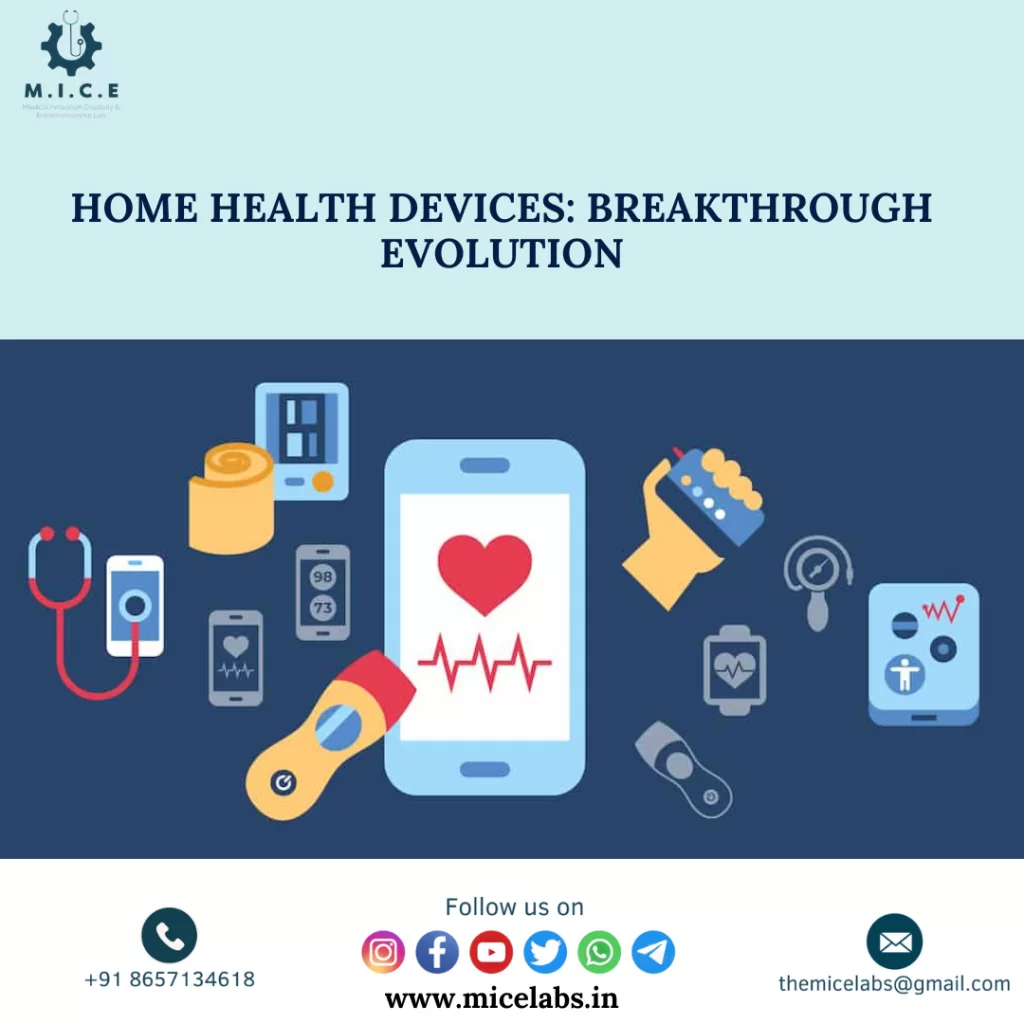In recent years, home healthcare devices have undergone a remarkable transformation, driven by technological advancements and an increasing demand for personalized care. These innovations have empowered individuals to manage their health more effectively from the comfort of their homes, reducing the need for frequent hospital visits and improving overall quality of life. This blog delves into home healthcare devices’ evolution, history, current trends, and future potential.
The Early Days of Home Healthcare: Home healthcare is not entirely new. In the past, simple devices like thermometers, blood pressure cuffs, and glucose meters allowed patients to monitor basic health metrics. These tools provided valuable data but often required professional interpretation and lacked real-time connectivity with healthcare providers. The reliance on manual recording and communication created delays in diagnosing and treating conditions.
The Digital Revolution: The advent of digital technology marked a significant turning point in home healthcare. The introduction of smart devices and mobile health apps revolutionized how patients interact with their health data. Wearable technology, such as fitness trackers and smartwatches, enables continuous monitoring of vital signs, physical activity, and sleep patterns. These devices track health metrics and provide real-time feedback and alerts, empowering users to make informed decisions about their lifestyle and health.
Integration with Telemedicine: The integration of home healthcare devices with telemedicine has further expanded their capabilities. Telemedicine platforms allow patients to share their health data with healthcare providers remotely, facilitating timely consultations and interventions. Devices like remote blood pressure monitors, pulse oximeters, and ECG monitors have become essential tools for managing chronic conditions such as hypertension, diabetes, and cardiovascular diseases. This seamless connectivity enhances patient engagement and enables personalized care plans.
Advanced Diagnostic and Therapeutic Devices: Today’s home healthcare devices are not limited to monitoring; they also include diagnostic and therapeutic tools. For instance, portable ultrasound devices and digital stethoscopes bring advanced diagnostic capabilities to the home setting. Similarly, nebulizers, insulin pumps, and automated medication dispensers provide therapeutic support for various conditions. These devices are designed to be user-friendly, ensuring that patients of all ages can benefit from their advanced features.
Artificial Intelligence and Machine Learning: Artificial Intelligence (AI) and Machine Learning (ML) are playing a pivotal role in the evolution of home healthcare devices. AI-powered algorithms can analyze vast amounts of health data to identify patterns and predict potential health issues. For example, AI can detect irregular heart rhythms from wearable ECG monitors and alert both the patient and their healthcare provider. This proactive approach to healthcare can prevent complications and improve outcomes.
The Future of Home Healthcare Devices
The future of home healthcare devices looks promising, with ongoing research and development focusing on even more sophisticated and integrated solutions. Emerging technologies like IoT (Internet of Things) will enable seamless connectivity between multiple devices, creating a comprehensive health ecosystem. Additionally, advancements in sensor technology and non-invasive monitoring will make it easier to track a wider range of health parameters without discomfort or inconvenience.
Tips and Tricks for Healthcare Professionals
- Stay Updated: Keep abreast of the latest advancements in home healthcare technology to provide informed recommendations to your patients.
- Patient Education: Educate patients on how to use these devices correctly and interpret the data they provide.
- Data Integration: Encourage patients to use devices that can integrate with telemedicine platforms for seamless data sharing.
- Personalized Care Plans: Utilize the data from home healthcare devices to create personalized and adaptive care plans for your patients.
- Monitor Compliance: Regularly check in with patients to ensure they are using the devices consistently and correctly.
The evolution of home healthcare devices has transformed how patients manage their health, offering greater autonomy, convenience, and personalized care. As technology continues to advance, these devices will play an increasingly vital role in preventive care and chronic disease management. Healthcare professionals should embrace these innovations, leveraging them to enhance patient outcomes and foster a proactive approach to health and wellness.
By staying informed and integrating these tools into clinical practice, doctors and other healthcare professionals can significantly improve patient care and engagement, ultimately leading to better health outcomes and a higher quality of life for their patients.
#Homehealthcare #Remotepatientmonitoring #Telemedicine #Wearabletechnology #AIinhealthcare #Chronicdiseasemanagement #Personalizedcare #Digitalhealth #Medicine #Innovation #AI #ML

